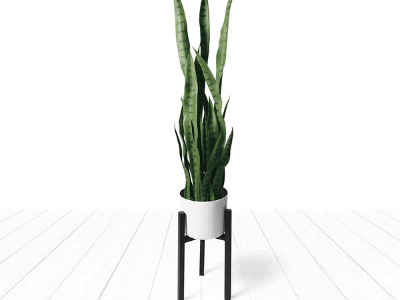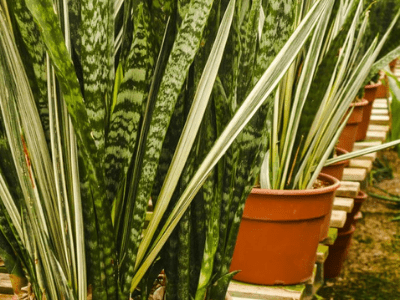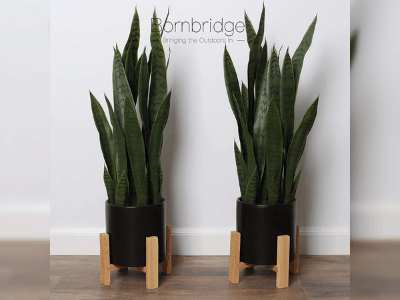
What Is Snake Plant?
A native of Asia and Africa, the Sansevieria trifasciata is a common houseplant.
Evergreen sword-shaped leaves, which grow upright and almost resemble artificial foliage….
….distinguish it from other plants. Plants that look like snakes are often used as home decor…
…as they’re easy to care for, require little water, and are pleasing to the eye. Also it’s easy to maintenance the plant.
Some people consider it safe to consume these plants, but if consumed, they are mildly toxic.
A poison in their leaves can cause swelling and numbness on the tongue if eaten in excessive amounts.
A plant like this should not be kept around pets and young children since they can nibble its leaves.
Most snake plant foliage looks like narrow, green leaves with a silver or grey horizontal streak.
Growing up to several feet tall, this plant does best in a low-light environment.
Here we have the story from Kevin about his experience having tall snake plant varieties
Let us hear Kevin’s story
In this summer finally I have snake plant. But its not an ordinary snake plant.
The long snake plant is a very popular type of houseplant.
They produce leaves that are up to 2 feet long and they grow on thick stems.
These tall plants can take up quite a bit of room…
….but some people prefer them because they don’t need as much care as other types of plants do…
….since these stay in a pot most of the time.
If you’re looking for some really big leaves or an exotic look to your home decor, then this is the plant for you!

Sansevieria are evergreen perennials that can grow anywhere from eight inches to 12 feet high.
Erica Daniels, author from proflowers.com
Here’s the thing…
These plants come in many varieties. A few of the more common include:
- Bird’s nest snake plant. Also referred to as the Hahnii, this plant is relatively small, growing to only 6 inches tall. The leaves form clusters that closely resemble a cup, similar to a bird’s nest.
- Cylinder snake plant. The Sansevieria cylindrica has round leaves that can grow several feet in length. The leaves from this plant reach outward to resemble a crown.
- Laurentii Sansevieria. The Laurentii is also a popular snake plant, known for its green-colored center and yellow margins.
People include snake plants in their décor because they’re low maintenance, requiring little attention to grow.
They are hardy, resilient plants and are just as tolerant of dry circumstances as they are of moist ones…
…which means they are able to thrive both indoors and outdoors.
If you plan to have a snake plant in your home, here are a couple of things to keep in mind:
- Don’t overwater. This plant is weak when it gets a lot of water.. Avoid over watering snake plants as it can cause rotting. Place a snake plant in a pot with good drainage. Make sure the soil is totally dry before watering it.
- It’s best to keep snake plants in direct sunlight. Partial sun is also fine.. Still, you may find it growing in darker corners, or in places with brighter sunlight. Shaded plants get dull and their leaves may become a bit floppy.
- Snake plants are proven to be as useful as they are beautiful. Despite their low maintenance requirements, they can be grown indoors and outdoors.

Next Up..
How to Plant Snake Plant?
Choose a pot that has a drainage hole in the bottom. Plastic pots do not work well for snake plants…
…as they do not allow the soil to dry out as quickly as terra cotta pots do.
Make sure your planting mix drains well. It is ideal for you to use a potting mix made specifically…
….for “cacti and succulents”, as it will be more resistant to being oversaturated with water.
Don’t bury snake plants too deeply when repotting them.
The plant should be planted as deep as it was in its previous container.

Go on…
How Tall Snake Plant Can Be?
A snake plant is generally known as the variety S. trifaciata laurentii, with variegated foliage…
….with yellow and green stripes along the sides and a green center.
Although it doesn’t produce many flowers, it may produce a plant of small white bunches…
…whose scent is wonderful, that grows straight up into the air.
There is speculation that this Sansevieria variety may reach more than 2 feet in height, and even more than 3 feet…
….with the right conditions. Some even report that it reaches up to 5 feet! The snake plant is also referred…
….to as the S. trifaciata. It bears a similar resemblance to the S. trifaciata laurentii…
…except that there is no laurentii being added.
The leaves have no yellow stripes, just green “snakeskin”.
This form tends to grow along the lines of the S. trifaciata laurentii as well.
The Spear Sansevieria, or the Sansevieria cylindrica, is one variety that tends to be more exotic.
Once mature, the leaves of the S. cylindrica are cylindrical and are unlikely to bend without breaking.
The leaves grow upwards and outward in a fan-like shape.
Some nurseries take advantage of the fact that the leaves are supple when new…
…and they bend them as easily as if they were soft.
They weave snake plant leaves together to create plaits or braids, similar to the way they do it with “lucky bamboo”…
…or a “money tree”. In addition to leaf shape, the Spear Sansevieria differs from the Spear Sansevieria…
….in the sheer size the tree can grow to. While the S. trifaciata/S. trifaciata laurentii can occasionally grow up…
…over 3 feet, the S. cylindrica can grow to heights over 7 feet.
On the opposite end of the spectrum in size stands the variety S. trifaciata “hanhii”.
This Sansevieria stands only 4-8 inches high, never reaching over a foot tall.
Its coloring is similar to that of S. trifaciata laurentii, with yellow stripes banding a green snakeskin interior.
This S. trifaciata cultivar is a dwarf variety, keeping it small. For this reason and that of its slow growth…
…it is often used in terrariums. By cutting the tallest leaves down to the soil line, the plant will be lowered in height.
Usually, the leaves grow in a rosette pattern from the rhizome in the soil with the youngest leaves…
….near the center of the rosette and the oldest, tallest leaves on the outside of the rosette.
As a result, you can lower the height of the plant without changing its appearance.
Be careful not to damage neighboring leaves when using the thin knife to cut away the individual leaves.
Get rid of any leaves you think are too tall. Those leaves that are young and smaller will continue…
…to grow and sustain the character of the plant.

Last but not least..
Growth Rate
It’s generally considered that snake plants grow fairly slowly in moderate light or if they are kept indoors.
The boost causes the snake plant to grow rapidly if grown in a good amount of sunlight.
Based on the variety of Sansevieria that you have planted, you will eventually see a height and width of 4-6 feet.
S. trifaciata laurentii is the commonest and is also called Mother-in-Law’s tongue.
A long, straight, sharp leaf that reaches from the roots is the reason behind this phenomenon.
If you need additional plants, you can start new ones from the pruned leaves.
You need to know which end of the cuttings is up, as plants that are planted upside-down do not root.
Leaves can be divided into segments of 4-6 inches in length.
The bottom end should be planted approximately 1-1 1/2 inches deep in a drainable artificial soil mix.
The soil mix should be moist, but not wet. New plantlets will begin growing in about a month at room temperature…
…and roots will begin growing in another month or two.
You can cut off the plantlets from the mother leaf once they reach a size that makes them easy to handle…
…while preserving as many roots as possible.
Put them into separate pots, group several together to create a bolder effect, or plant a few in the garden.
Sum Up
See having Snake plant is good choice for you to have! It’s cool, its famous, it’s easy to have and care!
What else do you need? In this pandemic time like this, is a good choice for you to have an new activity…
…and having snake plant is a good choice for you to have!
Conclusion
Last thing for sure. This plant need to be care carefully, remember plant need the “love” too.
Alright that’s all for today! Do you have any questions about all of this?
Or do you want to add some method for having and care snake plant so it can grow taller?
Let me know your recommendation from the comment below.
I hope you can now take care your snake carefully and grow it big!
Thanks for reading this article! Bye!

